A week spent in the slightly less fuel efficient but more versatile Prius wagon
Pros:
Fuel economy
Improved driver visibility
Cargo room
Cons:
Average handling and limited steering feedback
Small, crowded touchscreen buttons
Quirky electronic shifter
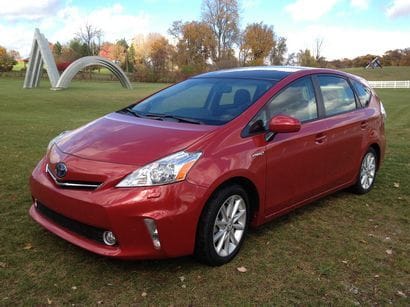
Toyota Prius
Through the first nine months of 2012, the Prius has been the best-selling carline in California. This might not come as a great surprise to many people, but it means that for the first time, a model line composed entirely of gasoline-electric hybrids has outsold the likes of both the Honda Civic and Honda Accord in the Golden State.

In part, this is a result of Toyota's decision to expand the Prius nameplate from its midsize sedan roots to include both the Prius c compact sedan as well as the model we're looking at today, the midsize Prius v station wagon.
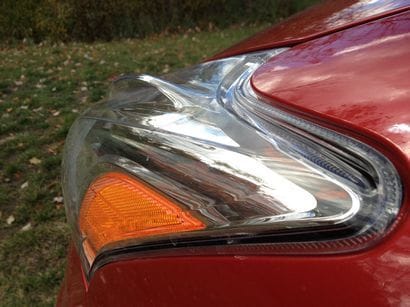
2012 Toyota Prius v
Unveiled at the 2011 North American International Auto Show in Detroit alongside a concept version of the smaller Prius c, the Prius v represents the first variant of the Prius AVW platform.

Exterior
Outside, the familial design cues make it hard to mistake the Prius v as being anything other than a Prius, despite the fact that it shares not a single body panel with the sedan.
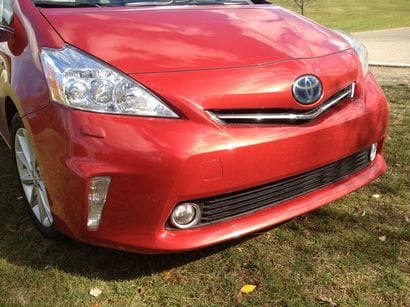
That being said, the wagon has an expanded wheelbase of 109.4 inches, is longer by 4.3 inches, wider by 1.2 inches and higher by 3.3 inches.
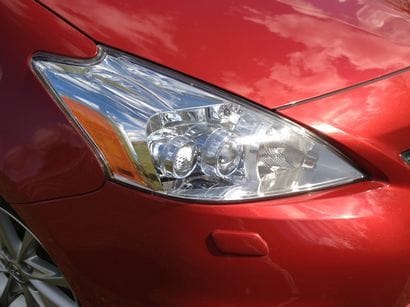
Up front, it has the same Klingon-esque headlamp enclosures, although on the v they are more vertical, feature a built-in aerodynamic fin, and each contains two energy saving LED low-beam projector headlamps.
Given the stylistic touches that adorn its bow and stern, the wagon's sides, like its sedan counterpart, are relatively plain and featureless save for a barely discernable crease just above the lower door edges.
In back, the rear window sits more vertically, while the spoiler has been moved from mid-window to just above the rear window which is flanked by a pair of narrower taillights. Despite these changes, however, the wagon still produces just a 0.29 coefficient of drag.
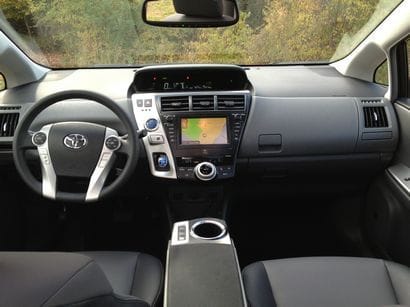
Interior
The Prius v takes advantage of its larger exterior dimensions by offering both more passenger and cargo room. In this case, cargo space gets a boost from 21.6 cubic feet in the sedan to a generous 34.2 cubic feet in the wagon. There's also a cargo cover that stores neatly under the cargo floor.
Rear seat passengers will find plenty of headroom and legroom, while the rear seats slide both fore and aft and also recline. Both back doors are larger than the sedan resulting in easier ingress and egress for occupants.
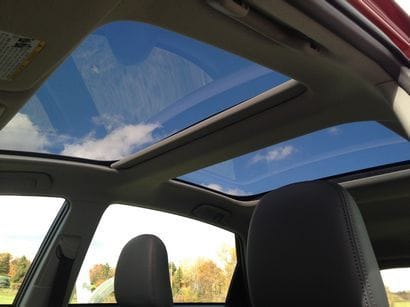
Up in front, the dashboard is well laid out and all controls are within easy reach of the driver – although some may find the center-mounted digital instruments take a bit of getting used to. The Prius v also eschews the flying buttress center console of the sedan, giving the front seat area a roomier sensation. The front seats are very supportive, offer just the right amount of bolstering and, like the rear bench, are covered in a rich looking and feeling "SofTex" material. Both the driver and front passenger seats are heated and feature manual adjustments (with power lumbar for the driver).
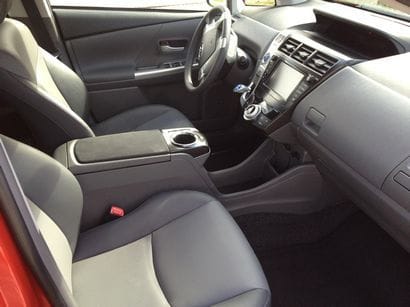
Due to the additional glass area and the larger rear window – sans the sedan's mid-mounted spoiler - the view out both the sides and back is excellent, save for a rather large D-pillar. It also helps that the Prius v comes standard with a rear-view camera.
The view out the windshield is also very good, although the high cowl makes it difficult to determine exactly where the front end is.

A couple of minor issues I encountered concerned the electronic shifter as well as the size of the station selector buttons on the touch screen.
Shifter mechanisms on the Prius consist of a joystick-type lever for reverse and drive along with a parking pushbutton set in the dash above the joystick. Neither of these systems is, shall we say, exactly intuitive and it may take a bit of practice before all drivers are quite comfortable with it.
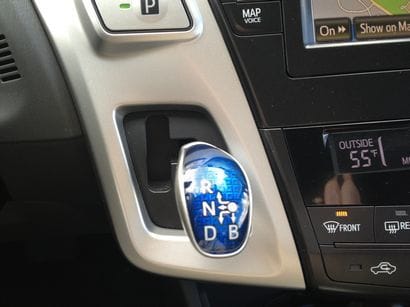
Suffice it to say that parking in a dimly-lit Costco parking lot at night is not the optimal time to get used to it.
As for the touch screen display, the radio buttons, although they seem to be large enough, lurk near the left edge of the screen and are so close together that you must take your eyes off the road to select a station (although in all fairness you can run through stations with a selector pad on the steering wheel – although this necessitates scrolling through each one until you reach the station you want and then you still have to view the screen to be sure it's the right one)
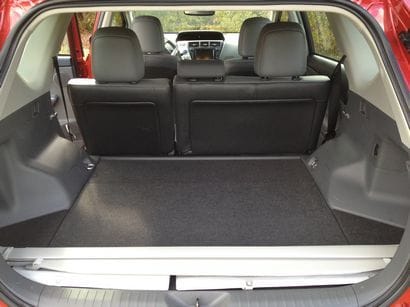
I was, however, able to pair my iPhone to the Prius Bluetooth system in under a minute without even having to consult the owner's manual –my own litmus test for user friendliness.
One particularly neat feature has to do with the optional twin fixed plastic sunroofs above both the front and rear passenger compartments. An electric sunshade uncovers both at the same time. Once you exit the vehicle and lock it, if the sunshades are in the open position they will automatically retract to keep the passenger compartment cooler.
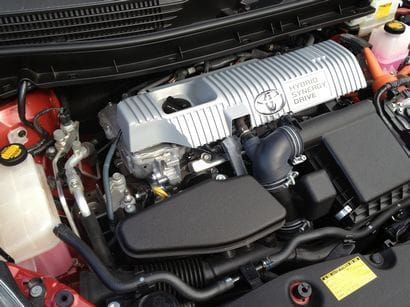
On the road
On the road, the Prius v exhibits a well-controlled ride, although there is noticeable body lean through corners. In addition, while the electric steering system has a nice weight to it, I found it lacking in the feedback department.
The Prius v is equipped with the same 1.8-liter, 134 horsepower inline-4 engine and CVT transmission as the Prius sedan. Along with its increased size, it's also 232 pounds heavier. This means that, despite the fact that it has a different final drive ratio, the bottom line power to weight ratio is not in the wagon's favor. As a result, acceleration is even closer to leisurely than sporty.
In some instances, such as accelerating up a hill or merging onto the freeway where you have a tendency to put your foot into it, coarse sounds emerge from beneath the hood and the engine sounds as if its straining. Road and tire noise are also apparent.

Equipment
Rather than rely on myriad option packages, the Prius v is available in three trim levels – the Prius Two, Prius Three and Prius Five. Each is available with a limited number of option packages plus a number of port and dealer-installed options.
The base Prius Two comes standard with seven airbags, power windows with auto up and down, driver's seat height adjustment, electric steering, electric water pump, tilt and telescopic steering wheel with audio, four-wheel disc brakes with ABS, stability control, traction control, brake assist and smart stop technology.

Also standard is automatic climate control, a 6.1-in. touch-screen with backup camera display, AM/FM CD player, satellite and HD Radio with hands-free phone capability and Bluetooth music streaming, 16” alloy wheels, keyless entry, push button start and a rear spoiler.
The Prius Three adds display audio with navigation and Toyota's Entune smartphone interface as well as steering wheel audio, climate Bluetooth and voice-activated navigation controls.
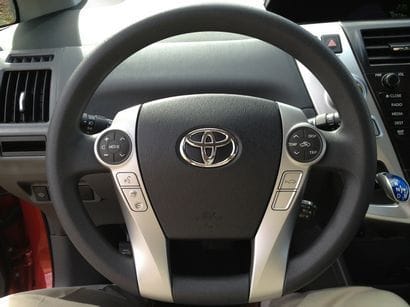
The Prius Five adds 17-inch alloy wheels SofTex heated front seats, automatic LED headlamps with auto level, fog lamps, three-door Smart Key System and an auto-dimming rearview mirror with HomeLink.
The only factory options package is the Advanced Technology Package available only on the Prius v Five which includes a hard disc drive and JBL sound system, Dynamic Radar Cruise Control with Pre-Collision System, Advanced Parking Guidance System and the Panoramic View Moonroof.
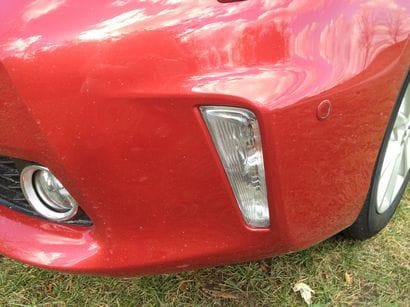
Pricing
Toyota new car prices, including a $760 delivery, processing and handling fee, begin at $27,280 for the Prius v Two. Our fully-optioned Barcelona Red Prius v Five had a base price of $29,990. Adding the Advanced Technology Package at $5,580 meant that the vehicle we tested checked in at $36,330.
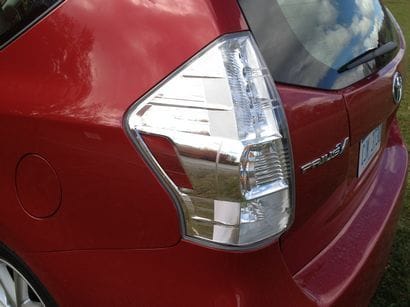
The Bottom Line
Just like the sedan, the Toyota Prius v wagon isn't for everyone. There isn't a lot of driver involvement and its handling, while solid, doesn't presume to have any type of sporting pretensions.
I've always felt that car buyers choose a Prius mainly for two reasons. The first is that they're environmentally conscious. The second is that they want everyone else to know they're environmentally conscious. This is something that Toyota continues to hone to a fine point and is epitomized by the vehicle's distinctive design.
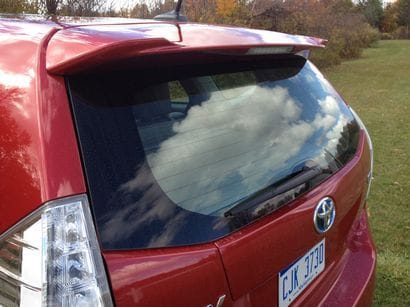
The fact is, current Prius owners and those seriously considering the brand should be thrilled by the Prius v. It's roomier and more versatile than the original, while still managing a respectable 44mpg/40mpg/42mpg city/highway/combined (I observed over 40 mpg - 43.8 mpg to be precise - in mostly city driving).
So for those who value fuel efficiency, versatility and uniqueness over handling, performance and driver involvement, the new Toyota Prius v might turn out to be close to the ideal vehicle.
For a high-resolution image gallery, click here.













